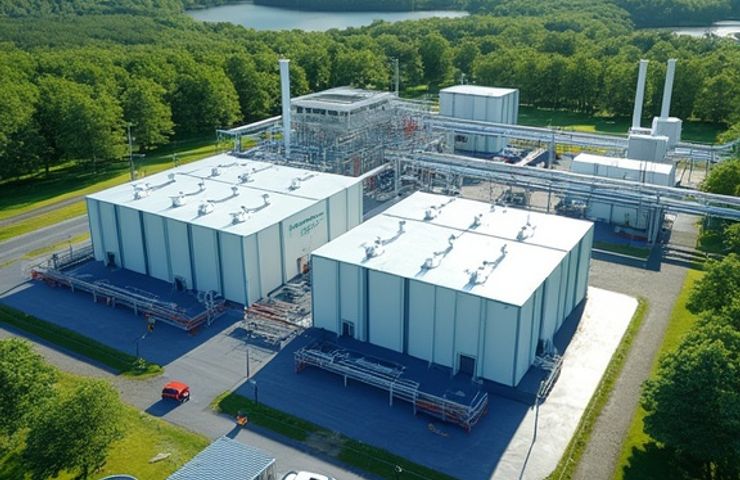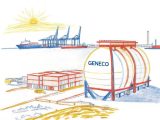
Aternium Lands $1M Boost to Ramp Up Clean Hydrogen Production in Delaware
October 2, 2025When Andrew Cottone kicked off First State Hydrogen in 2023, nobody could’ve seen the whirlwind ahead. Fast forward a few months and with Dora Cheatham coming onboard as VP of Sales and Commercialization in early 2024, the Wilmington team rebranded as Aternium. Then on September 25, 2025, they scored a big win: a $1 million investment from the State of Delaware via the Delaware Accelerator & Seed Capital Program (DASCP). Fueled by a federal SSBCI grant for early-stage clean energy ventures, they’ve got serious momentum—and the timing couldn’t be better.
Aternium isn’t going it alone. They’ve teamed up with German powerhouse Siemens for top-of-the-line electrolyzers, and Honeywell is on deck to keep everything humming with AI-driven predictive maintenance and rock-solid cybersecurity. They’re even capturing byproducts—think purified oxygen and heavy water—so every drop of feedstock pulls double duty.
“This funding is a total game-changer,” Cheatham says. “It validates our strategy and lets us fast-track compact, low-emission hydrogen production right here in the First State.”
This state backing dovetails perfectly with federal pushes—like the DOE’s Infrastructure Investment and Jobs Act incentives and the national spotlight on hydrogen hubs. And as an anchor partner in the MACH2 Clean Hydrogen Hub, Aternium is plugged into a regional effort spanning Delaware, Pennsylvania, New Jersey, and Maryland to build out clean hydrogen infrastructure.
Powering Up with Electrolysis and AI
So, what’s the secret sauce? Aternium is banking on Siemens DRL 9 electrolyzers. Unlike high-pressure systems, these modular units run at ambient pressure—no expensive compression gear and up to 15% less energy loss. Each skid can crank out tons of hydrogen daily—enough to fuel local chemical plants, data centers, or refueling stations. Since the electricity comes from nearby solar and wind projects, the result is truly clean hydrogen.
Better still, these DRL 9 units can throttle production up or down on the fly to match intermittent renewables. When solar or wind output shifts, the system adjusts in real time, boosting efficiency and helping to balance the grid during peak demand.
To keep surprises at bay, Aternium tapped Honeywell for an AI-driven predictive maintenance solution. Ultrasonic sensors and temperature probes stream data into a cloud analytics engine—safeguarded by enterprise-grade cybersecurity—so they can spot issues before they snowball, cut down maintenance costs, and extend equipment life.
Can Delaware Flip from Energy Importer to Exporter?
First up, Aternium has its eye on Kent County. Aging chemical facilities and idle industrial plots make perfect brownfield sites. Their design philosophy boils down to three key points:
- Footprint efficiency: Skid-mounted modules mean minimal civil work and rapid deployment.
- No on-site storage: Hydrogen’s produced to order and shipped immediately, cutting safety risks.
- Scalable growth: Plants can be replicated or expanded quickly as demand rises.
All of this is driven by industrial decarbonization. Local chemical and food-processing plants need hydrogen for refining and packaging. Swapping out gray hydrogen for clean hydrogen could slash their carbon footprints—and having compact plants close to these users cuts transport emissions, too.
On the mobility front, Delaware agencies are eyeing hydrogen fuel cell buses and heavy-duty trucks to replace aging diesel fleets. A local hydrogen production source could be a real game-changer, sidestepping long-haul trucking from distant suppliers.
Who’s knocking on Aternium’s door? Data centers looking for green backup power, the Port of Wilmington exploring cleaner refueling for its big rigs, and even pipeline hookups to send hydrogen onward to Philadelphia or New York. Could Delaware flip the script and become a Delaware energy exporter? That’s the dream—though it depends on market growth and significant infrastructure build-out.
Delaware’s Chemical Roots Spark New Energy Era
Delaware’s got deep chemical roots and technical know-how, but it’s long relied on imported fuel. The hope now is that clean hydrogen will revitalize its industrial base and keep more value in-state. Beyond existing plants, offering on-site hydrogen could lure data centers, green steel makers, and anyone else craving reliable, low-carbon energy. Plus, being smack in the East Coast corridor gives Delaware strategic access to major markets.
Academic institutions are jumping in, too. The University of Delaware’s College of Engineering is lining up research partnerships, while Delaware State University’s Center for Environmental Justice is working to ensure training and job opportunities in the new hydrogen economy are accessible to all. Community colleges are developing apprenticeships and certification programs with Aternium to get technicians and engineers ready for these cutting-edge facilities.
What’s Next on Aternium’s Roadmap?
That $1 million from DASCP will cover front-end engineering and design (FEED), permitting studies, and the first round of community outreach. At the same time, Aternium is in talks with utilities like Delmarva Power about tariff structures that reward flexibility and grid services. They’re also exploring hydrogen blends in existing natural gas pipelines to ease the transition for end users.
Meanwhile, the team’s lining up private investors for a Series A round, targeting federal clean hydrogen tax credits and grants under the Infrastructure Investment and Jobs Act and the Inflation Reduction Act. If permitting and market conditions line up, they could break ground by mid-2026 and deliver the first hydrogen before year’s end. Fingers crossed!
“We’re not just putting up another plant,” says Andrew Cottone. “We’re sketching out a blueprint for responsible, distributed hydrogen production. With partners like Siemens, Honeywell, MACH2, and our state champions, we’re carving a path toward a cleaner, more resilient energy system.”
As the clean energy transition picks up speed, Aternium’s Delaware launch could become the go-to case study for other regions. By combining proven tech, AI-powered ops, and strategic public-private collaboration, they’re betting this modest seed funding will kick off a scalable, impactful hydrogen economy in the Mid-Atlantic—and beyond.



 With over 15 years of reporting hydrogen news, we are your premier source for the latest updates and insights in hydrogen and renewable energy.
With over 15 years of reporting hydrogen news, we are your premier source for the latest updates and insights in hydrogen and renewable energy.